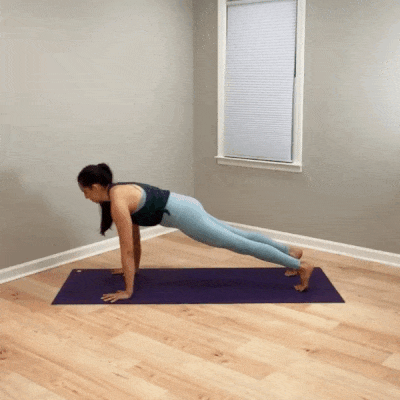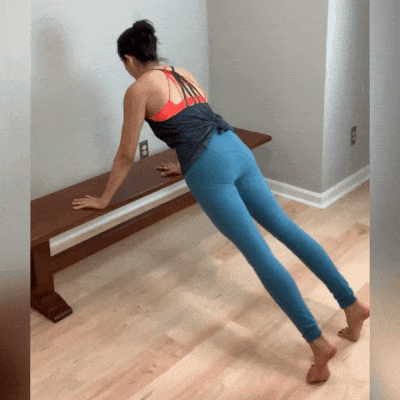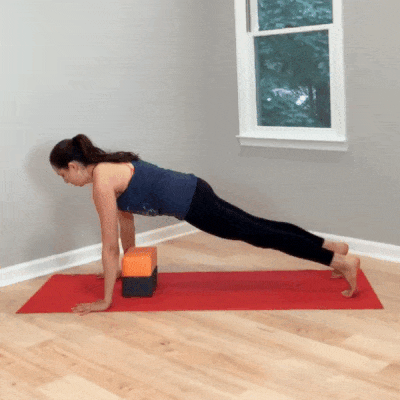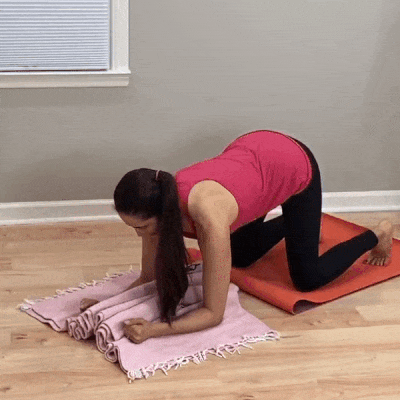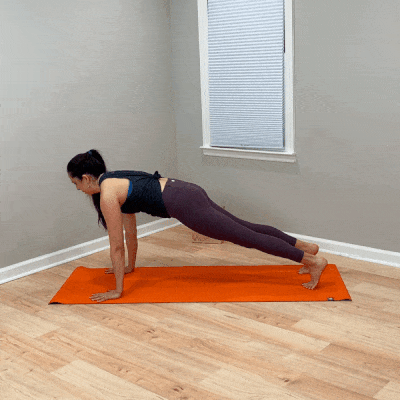The Vinyasa: Is It Too Hard for Yogis?
This blog post was first sent to Jenni’s email list as an email newsletter. Sign up for the JRY email newsletter here!
by Jenni Rawlings & Travis Pollen, PhD
Vinyasas tend to get a bad rap in the yoga world. These days, there’s even a trend toward minimizing the number of vinyasas one teaches in class – or eliminating them entirely from one’s sequencing.
To clarify, when we talk about “the vinyasa” in this article, we’re specifically referring to the three-step sequence of asanas commonly taught in flow-style yoga classes. This sequence comes in two general forms:
Option #1: chaturanga dandasana → upward facing dog → downward facing dog
Option #2: plank → lower to floor → cobra → downward facing dog
The main reason yogis are concerned about vinyasas is because they believe they’re injurious. The comprising poses are often claimed to put excessive stress on the shoulders, wrists, and low back. In addition, the repetitive nature of the vinyasas is also considered problematic.
This viewpoint is widespread in the yoga world. However, based on our understanding of movement science, injury etiology, and injury prevention, we believe those claims are narrow-minded.
Is Injury Ever Really About a Single Yoga Pose or Movement?
Injury risk is much more complex than we’re often taught in the yoga world. For example, yoga teacher trainings tend to focus on a single, non-optimal pose as being the one factor that matters for injuries. However, the science of injury prevention tells us that injuries are multifactorial events with many potential influences.
Here are just few factors that might contribute to a yogi’s risk of injury:
Training history
Strength levels
Intensity and volume of yoga practice as well as other physical activity
Preparedness for the pose in the moment
Sleep quality
Stress levels
Therefore, in this article we’ll incorporate a broader understanding about the nature of injury relative to vinyasas. Vinyasas may be associated with pain and discomfort for some practitioners, but is this due to inherent properties of the vinyasa itself? What if someone is strong and well-adapted to handle the loads of the vinyasa? Is the vinyasa still a problem? What if someone has a good amount of movement variety in their lives, which helps to round out the loading profile their body experiences? Is practicing frequent vinyasas still injurious for that person?
Clearly, whether the vinyasa (or any movement, for that matter!) is injurious is a nuanced question with a unique answer for every individual.
Moreover, the vinyasa offers lots of potential benefits. It provides an opportunity to develop horizontal shoulder-pushing strength. It can also be a productive way to improve shoulder and spine mobility. Plus, many people enjoy its familiar, flowing nature and consider it an integral part of the meditative yoga practice they know and love.
Instead of banning vinyasas from yoga classes (an avoidance approach), a more productive strategy is to focus on strength to support the vinyasa (an adaptive approach). The stronger we are, the more easeful our practice of vinyasas will be. And because strength tends to protect against injuries, increasing our strength will also naturally reduce our likelihood of injury. It’s the best of both worlds!
First Things First: Strength for Chaturanga is Key
A well-executed chaturanga requires a lot of strength. In fact, a full chaturanga requires us to push about 70% of our bodyweight through our arms. Many yogis lack this level of upper body strength and end up doing a “sloppy” chaturanga in their flow practice (oftentimes unknowingly).
Unfortunately, simply continuing to practice a sloppy chaturanga over and over is not an effective way to build strength. As a result, most flow-style yoga classes don’t do a good job of building the requisite strength. So what’s a yogi to do?
To intentionally build pushing strength to support chaturanga, it might mean doing so outside of your yoga practice. (Scandalous, we know!) Luckily, we can take cues from the strength training world for how to proceed. The key is to implement appropriately-scaled versions of bodyweight horizontal-pushing.
Here are our top 4 ways to build strength for chaturanga (a.k.a. a push-up movement pattern):
You could choose any one of these push-up variations on its own, or you could select a few of them and cycle through them throughout the week.
To effectively stimulate strength adaptations, it’s ideal to practice these moves for sets and reps (e.g., 3 sets of 8-10 reps). Each time you revisit a particular variation, try to progress by increasing the degree of difficulty or doing a few additional reps.
Of course, practicing poses “for reps” isn’t always practical in a yoga class setting. This is just one more reason to incorporate a separate strength practice from your asana practice!
(Pssst… you can do exactly that with us in our Strength for Yoga: Remote Group Training program. ;) )
In addition to working on variations of chaturanga as shown above, we might also consider bringing other strength training exercises into our practice. These exercises can target our shoulder muscles even more thoroughly.
Here are 4 of our favorite exercises with direct carryover to a push-up (and chaturanga)!
How to Modify the Vinyasa in the Meantime
While you’re building strength for chaturanga in your strength practice, you’re likely still practicing vinyasas in your yoga classes in the meantime, right? Or maybe you’re a yoga teacher who’s curious about some helpful modifications to offer for the vinyasa?
Just because we might not have the strength required to practice full vinyasas with control yet doesn’t mean that we should either practice sloppy vinyasas or practice no vinyasas at all. We can simply choose to practice smart vinyasa regressions.
Regression provide yogis who currently lack the strength to practice a “full vinyasa” with more accessible options scaled to their current strength level. This way everyone can succeed with the movement and stay connected to their meditative flow right on the yoga mat.
Here are our top 4 vinyasa regressions, which keep us in the flow of our practice without overwhelming us with too much challenge:
In summary, to transform your vinyasas into skillful, controlled elements of your yoga practice, we recommend the following:
Progressive strength training to increase shoulder-pushing strength and push-up capacity – probably practiced separately from your yoga practice. This practice can include both push-up movement patterns and exercises with direct carryover to push-ups.
Smart vinyasa regressions within a yoga practice itself to meet your body at its current ability – so you can experience success in this movement pattern!
Using this approach, as well as keeping in mind bigger-picture considerations about injury prevention such as one’s intensity and volume of yoga practice and overall movement profile, we can embody an optimistic and empowered approach to this foundational ingredient in our yoga practice.
Did you know? You can do all of that with us in our Strength for Yoga: Remote Group Training program – start your free 7-day trial today!
What is Remote Group Training?
Yoga-specific strength training programs designed by a long-time yoga teacher (Jenni Rawlings) and an Exercise Science professor (Travis Pollen, PhD)
Monthly full-body workouts with a special yoga or strength training theme to enhance and fill in the gaps in a traditional mat practice
Your choice of a 2 or 3 day/week training schedule
Access to an interactive, mobile-friendly training log spreadsheet
Comprehensive exercise database with over 100 videos!
Connect with us and a rad community of fellow strength-minded yogis through an exclusive forum (including Q&A and form feedback)


